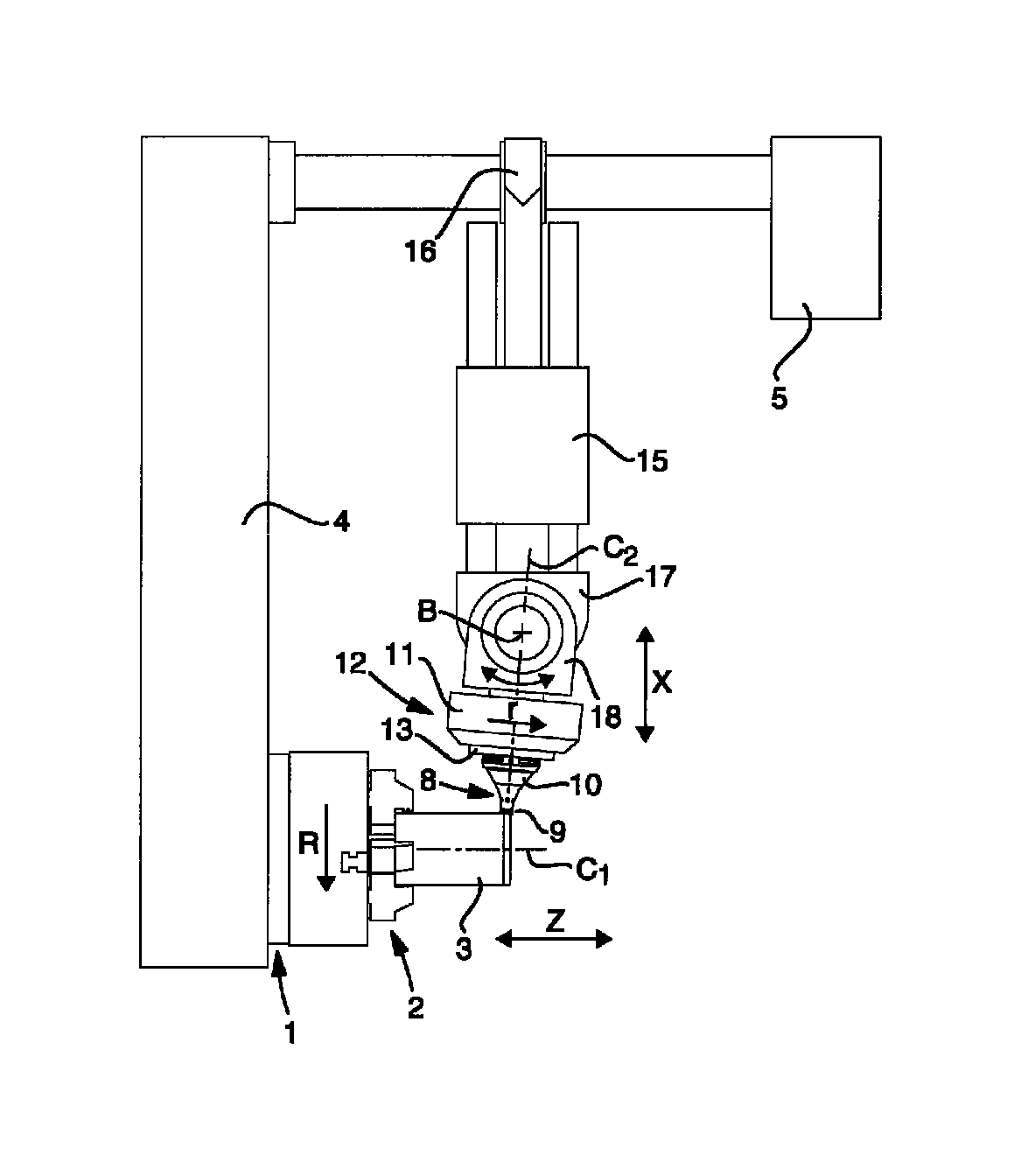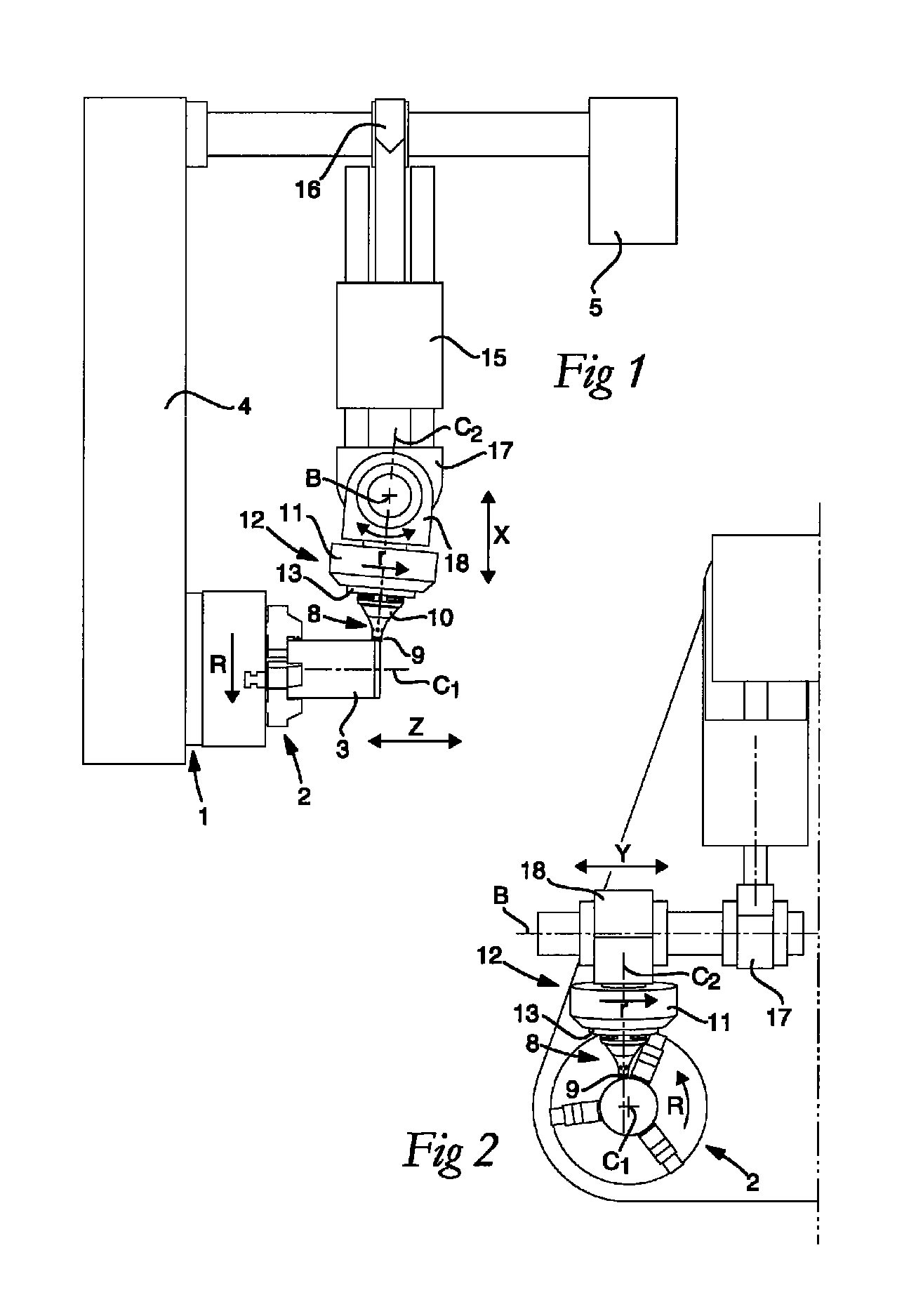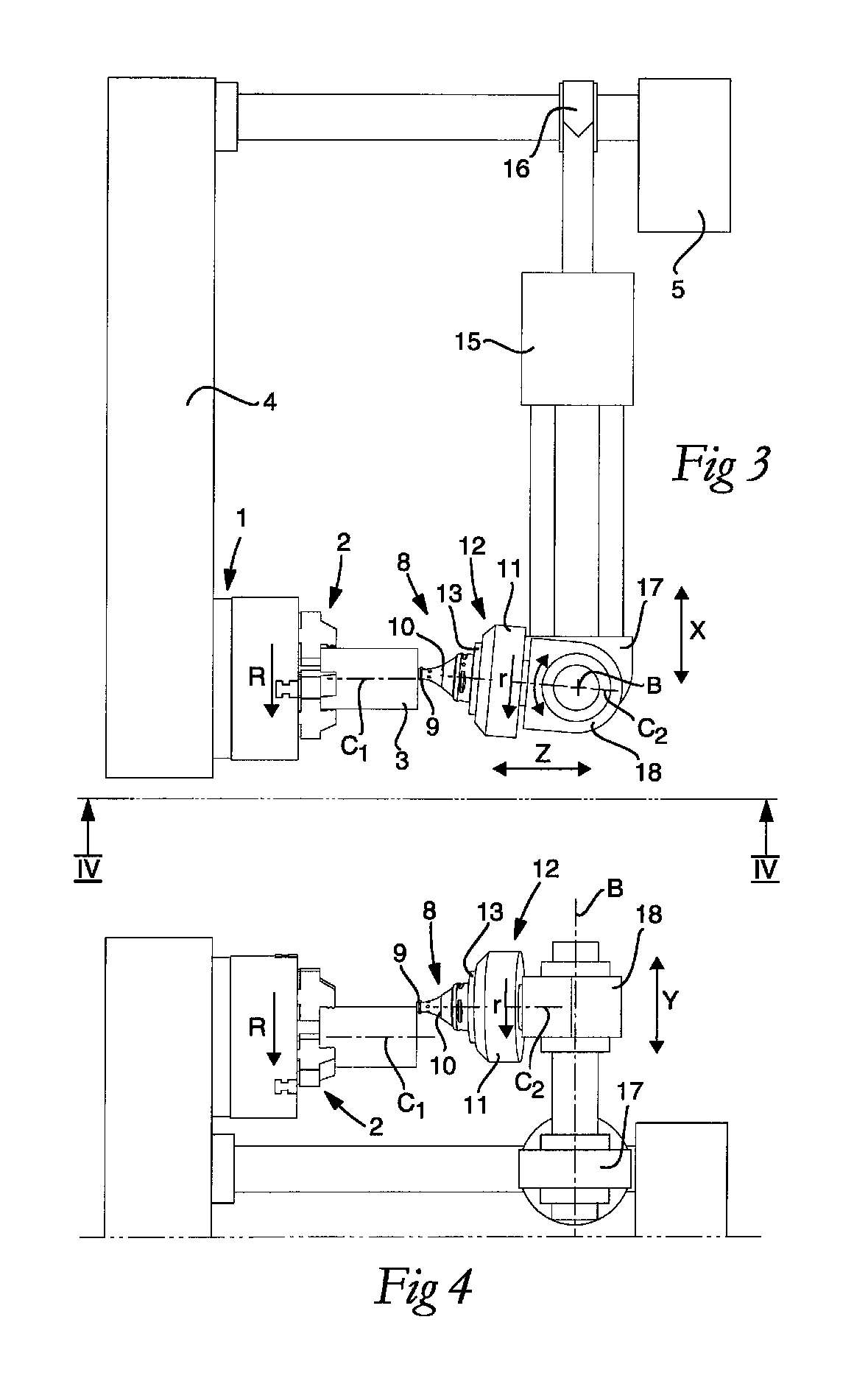Turning insert, a tool part, a method as well as a machine tool for chip-cutting metal machining
a technology of turning inserts and metal machining, which is applied in the direction of cutting inserts, manufacturing tools, shaping cutters, etc., can solve the problems of affecting the service life negatively, high heat generation of this area, and large wear of the same area, so as to achieve the effect of high rotation speed of turning inserts, high friction, and advantageous rotation speed
- Summary
- Abstract
- Description
- Claims
- Application Information
AI Technical Summary
Benefits of technology
Problems solved by technology
Method used
Image
Examples
first embodiment
[0062]FIGS. 5-8 show the turning insert 9. The turning insert 9 is formed as a cutting insert having a fastening hole 25 for the receipt of a fastening element, for instance a screw 38, see FIG. 20, for fastening the turning insert 9 in the tool holder 10. The fastening hole 25 extends through the front surface 21 and the turning insert 9.
[0063]The first portion 24a of the chip surface 24 has a rotationally symmetrical first extension and, in the first embodiment, a concave shape as seen in a cross-sectional plane comprising the tool axis C2, see FIGS. 7 and 8. In the first embodiment, the angle α is measured in the immediate vicinity of the cutting edge 23 and less than 90° in respect of the first portion 24a. The angle α may be 40-80°.
[0064]The chip breaking means include the circumferential second portion 24b of the chip surface 24. In that connection, in the first embodiment, the second portion 24b has a non-rotationally symmetrical second extension that forms at least part of t...
fourth embodiment
[0069]The fourth embodiment also differs from the earlier embodiments in that the turning insert 9 has a tapering fastening pin 33 formed to be inserted and be fastened in a corresponding opening 34 of the tool holder 10. As is seen in FIG. 19, the fastening pin 33 and the opening 34 has each a thread, which are in engagement with each other when the turning insert 9 is fixed in the tool holder 10.
[0070]FIG. 20 shows a tool 8 having a tool holder 10 and a turning insert 9 according to the first embodiment. The turning insert 9 is detachably mounted on the tool holder 10 by a fixing screw 38.
[0071]FIGS. 21 and 22 illustrate a fifth embodiment of a turning insert 9, wherein the chip breaking means include a circumferential notch 35 that extends inward in respect of the tool axis C2, and a circumferential elevation 36 that extends outward in respect of the tool axis C2. Such a rotationally symmetrical shape of the chip breaking means may advantageously be provided on the second portion...
sixth embodiment
[0072]FIGS. 23-26 show a turning insert 9 which is an integrated part of a tool part 8′ that is mounted in the tool 8. The turning insert 9 is formed in the tool part 8′, for instance by machining of the tool part 8′ for the creation of the cutting edge 23 and other details. The tool part 8′ is formed as a cylindrical body having two ends. One or both ends may be provided with a respective integrated turning insert 9. In the embodiment illustrated, the tool part 8′ is formed as a solid, or essentially solid, body. The tool part 8′ may, however, include one or more cooling ducts (not shown) that extend through the solid body.
[0073]In the sixth embodiment, the tool 8 has a tool holder 10 that is formed as a chuck-like holder or as a tool chuck. The tool holder 10 includes a cylindrical, or essentially cylindrical, cavity for the receipt of the tool part 8′ including the turning insert(s) 9 in such a way that one turning insert 9 is outside the cavity. The tool holder 10 in the sixth ...
PUM
| Property | Measurement | Unit |
|---|---|---|
| angle | aaaaa | aaaaa |
| angle | aaaaa | aaaaa |
| angle | aaaaa | aaaaa |
Abstract
Description
Claims
Application Information
 Login to View More
Login to View More - R&D
- Intellectual Property
- Life Sciences
- Materials
- Tech Scout
- Unparalleled Data Quality
- Higher Quality Content
- 60% Fewer Hallucinations
Browse by: Latest US Patents, China's latest patents, Technical Efficacy Thesaurus, Application Domain, Technology Topic, Popular Technical Reports.
© 2025 PatSnap. All rights reserved.Legal|Privacy policy|Modern Slavery Act Transparency Statement|Sitemap|About US| Contact US: help@patsnap.com



